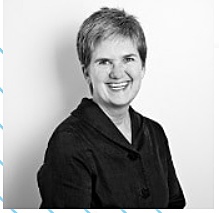
Each organization approaches diversity, equity and inclusion (DE & I) differently based on where they are, what they do and the priority they can or do give it.
In this series, we will explore why DE & I matters, what to do to improve DE & I at your organization, how to tell if it’s working and when to make adjustments along the way.
Let’s start with some of the basic ideas.
What is Diversity, Equity and Inclusion?
Diversity refers to whether your workforce is mostly homogenous or not. Do the people in your organization look and sound and think alike? Or are there lots of different people with a variety of backgrounds, cultures and perspectives who don’t look so much alike? There are often good reasons why a workforce is not diverse. A common one is that the community where the organization does business is not diverse. But as we have all adjusted to new ways of working during the pandemic, it may time to rethink where and how to recruit.
Equity is to whether people are treated fairly. Pay equity is a key piece. But equity also applies to all other employment decisions from who gets budget to who gets key projects to who gets promoted. How are power and resources distributed in the organization? Is it equitable so that opportunity is evenly distributed? The answer to this question is almost always “no,” but it is rarely intentional. Inequities arise in how organizations are formed and evolve. Now, with the data and technology available, it is much easier to take a clear look and address any issues.
Inclusion means the people who work there feel welcome, appreciated for who they are and that they belong. There is cross-over here with many approaches to employee engagement. But the focus is on whether the culture of the organization has room for difference and encourages people to offer their unique perspectives. This is often the hardest piece, not because people don’t want to be inclusive, but mostly because they are a little anxious about getting it wrong and aren’t sure what to do.
As we move forward in improving diversity, equity and inclusion, here are some of the basic components:
Demographic – Who works there and how does that compare to the demographics for people in the area and the qualified workforce in general?
Culture – When people other than straight white men are hired, does the organization’s culture recognize their challenges and support their growth and success in the organization? Do people feel like they belong and are being treated fairly?
Compliance – Equal employment opportunity is the law and diversity is a basic legal requirement, not an exception. EEO compliance is not just about protecting against lawsuits, it’s about creating a discrimination and harassment-free workplace.
Business Strategy/Priority – Is diversity, equity and inclusion a “must-have” or a “nice to have?” Does DE & I belong to HR and recruiting or is it an essential part of an organization’s priorities and business strategy?
Human Rights – Does the organization approach DE & I as an issue of human rights and ethics or as a trend and employment branding concern?
Health and Safety – Discrimination is a form of trauma. When people experience bias and discrimination based on what they look like or who they are, it takes a lot of extra work just to exist. Does the organization focus on prevention and quickly address problems, or does it wait until there is a formal claim?
Power and Resources– At the core, discrimination and harassment are about power and resources. Difference often creates fear or misunderstanding and, in turn, bias. As long as the framing is “us v. them” and “them” is seen as a threat, then the organization will naturally protect and conserve power and resources in the “us” group. This results in career cul de sacs, barriers to promotion and leadership, and pay disparities. Power and resources are at the heart of both the cause and the effects of bias and discrimination.
These components all overlap with one another; none is distinct. This is why any approach to diversity, equity and inclusion has to be bigger than recruiting and then investigating claims.
 Heather Bussing is a California employment lawyer and analyst in the HR Tech industry. She writes regularly at HRExaminer.com and loves helping organizations prevent problems and build more human friendly workplaces. She also loves photography and posts a landscape every morning on Twitter @heatherbussing.
Heather Bussing is a California employment lawyer and analyst in the HR Tech industry. She writes regularly at HRExaminer.com and loves helping organizations prevent problems and build more human friendly workplaces. She also loves photography and posts a landscape every morning on Twitter @heatherbussing.


